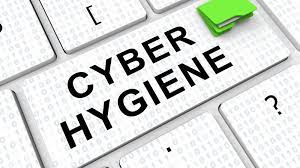As we usher in the new year, it’s time to reflect on the past and set fresh goals for the future. While many may opt for typical resolutions like healthier living, those of us in the IT industry recognize the paramount importance of prioritizing cyber hygiene best practices. As security solutions professionals, we understand the critical role that good cyber hygiene plays in mitigating the ever-growing threat of cyber attacks. If your organization is reassessing its cybersecurity posture, now is the perfect time to review and reinforce your cyber hygiene practices as we embark on 2024. Here’s a comprehensive guide to get you started.
サイバー衛生を理解する
Let’s begin by defining cyber hygiene and its significance in today’s digital landscape. Cyber hygiene encompasses a set of measures and practices that individuals and organizations alike can adopt to maintain optimal cyber health. Just as personal hygiene habits like showering and brushing teeth are essential for physical well-being, practicing good cyber hygiene is imperative for preventing data loss, breaches, and identity theft. Daily cyber hygiene practices include creating strong passwords, updating software regularly, exercising caution with emails and links, and backing up data consistently. In essence, cyber hygiene is about proactive risk mitigation through adopting behaviors that minimize the likelihood of a cyber attack—a task of monumental importance that can safeguard your business and its reputation.
サイバー攻撃の急増: 原動力を明らかにする
To appreciate the criticality of good cyber hygiene, it’s crucial to delve into the factors fueling the surge in cyber attacks in recent years. The proliferation of sophisticated hackers, the integration of AI in cybercrime, the shortage of skilled IT professionals for burgeoning businesses, the heightened sophistication of phishing scams, and the exploitation of collaboration tools in remote and hybrid work environments are among the key contributors. According to Check Point Research, cyber attacks surged by 38% in 2022—a staggering statistic that underscores the urgent need for individuals, leaders, and organizations to prioritize regular cyber hygiene practices in the year ahead.
サイバー衛生のベストプラクティス
Effective cyber hygiene practices require concerted efforts at both the individual and organizational levels. Individuals must grasp their pivotal role as frontline defenders against cyber threats, including email phishing and malicious link sharing. Conversely, organizations must implement robust security measures to safeguard client data. With this dual focus in mind, here are some exemplary best practices to consider for 2024:
個人のサイバー衛生チェックリスト:
- 強力で一意のパスワードを利用する
- 該当する場合はパスワードマネージャーを使用する
- 許可されたアクセスを同僚と共有しないようにする
- プロンプトに従ってソフトウェアを定期的に更新する
- 必要なセキュリティソフトウェアをインストールする
- サイバーセキュリティトレーニングセッションに参加する
- 電子メールと添付ファイルに注意を払う
- ITディレクティブごとにパッチを適用する
- 利用可能な場合は多要素認証を活用する
- VPNなしで公衆Wi-Fiの使用を控える
- 必要に応じてVPNを利用する
組織のサイバー衛生チェックリスト:
- 厳格なセキュリティソフトウェアとファイアウォールを実装する
- バックアッププロトコルと災害復旧演習を定期的に実施する
- メールセキュリティとサイバー脅威の危険信号についてチームメンバーをトレーニングする
- システムの健全性のためのリアルタイム監視ツールを活用
- サイバーセキュリティのベストプラクティスについて従業員を教育する
- アクセス制御を実装し、必要に応じてアクセス権を取り消す
- 多要素認証とパスワードマネージャーの統合
- ウイルス対策ソフトウェアとファイアウォールを採用する
- クラウドの使用状況とセキュリティポリシーを作成する
- エンドポイントの管理とセキュリティ保護
- 堅牢な ID およびアクセス管理プログラムを確立する
- 資格情報とパスワードの要件を適用する
- 可能な場合はネットワークをセグメント化する
- 定期的なリスクアセスメントの実施
- 公衆Wi-Fi使用のリスクについてスタッフをトレーニングする
結論
In our technology-driven world, adhering to comprehensive cyber hygiene practices is paramount to mitigating the escalating threat of cyber attacks. MyCyberI.Q. stands ready to assist your organization in fortifying its cyber hygiene and best practices, offering cyber security solutions and expertise. Remember, practicing just a few cyber hygiene measures won’t suffice—the key lies in implementing a robust program at both the individual and organizational levels. Stay tuned to our blog and engage with our team to kickstart your journey toward enhanced cyber hygiene and resilience in the year ahead.
